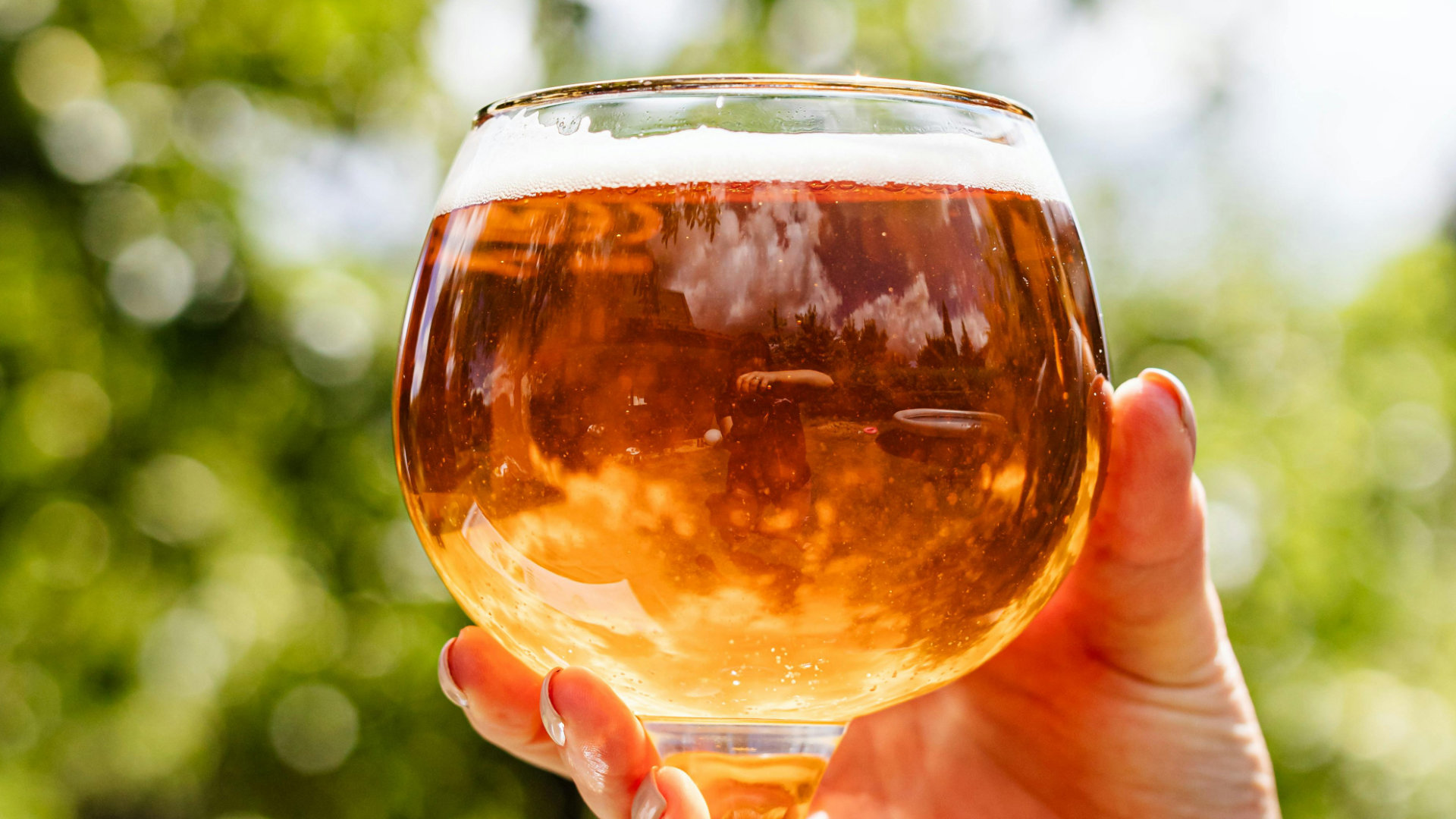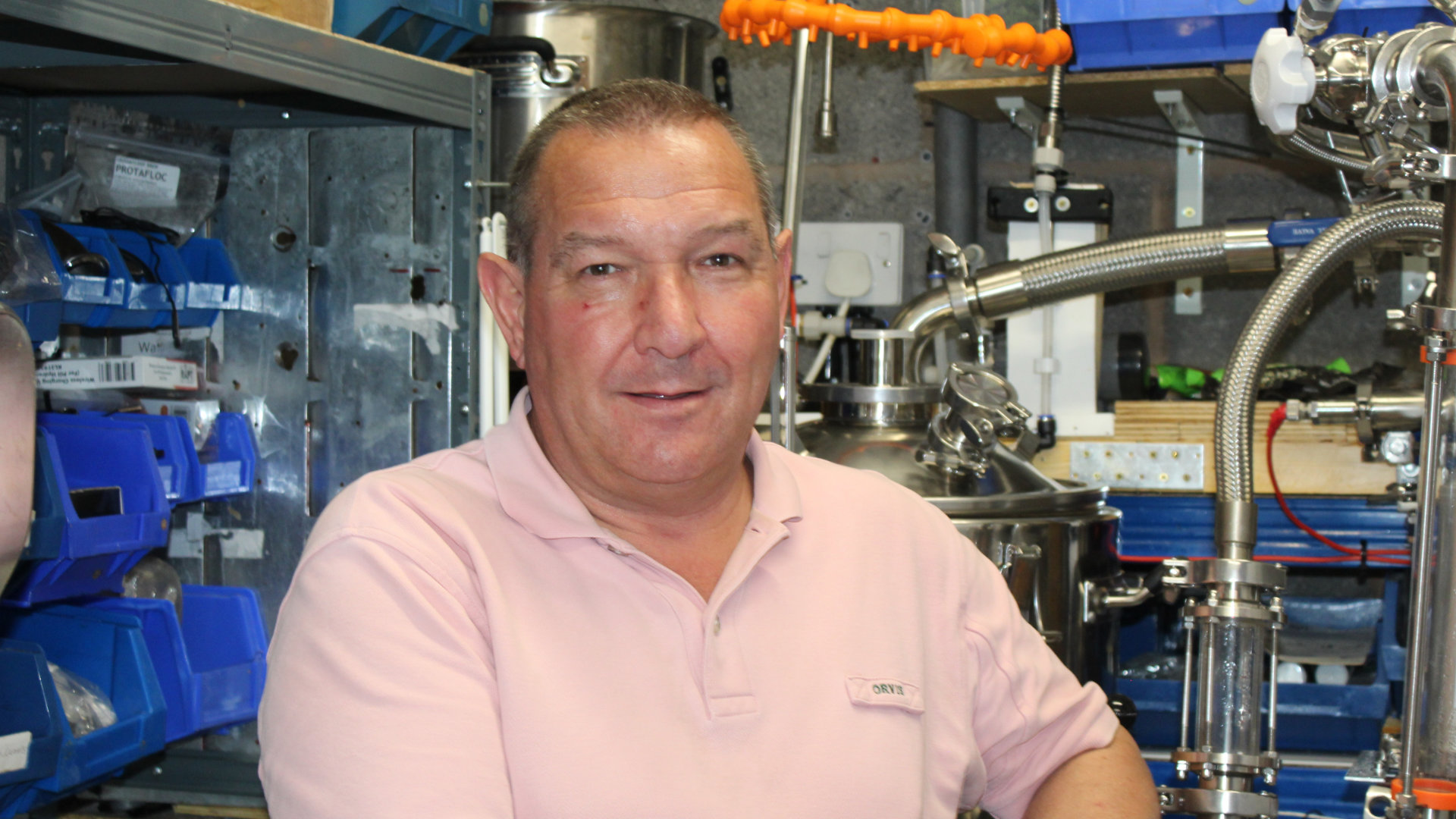For a lager-loving nation, the UK seems to have overlooked adding more craft to their lagers. One London brewery is looking to change that by going back to the source - Bavaria.
‘German Kraft was born out of the desire to revive the ceremony that traditionally surrounds beer drinking in Franconia; to create a locally brewed beer, full of character and drink it fresh from the tank.’
The idea for German Kraft was sparked when German-born co-founder Felix Bollen completed an internship at the Steinbach Bräu brewery in Erlangen, Franconia. German Kraft kicked off with their original brew pub in Mercato Metropolitano, a sustainable community market in Elephant & Castle, with a brew garden, glasshouse and taproom. They now have two further sites: in Mayfair, in the beautiful and historical St. Mark’s Church, and in Dalston, East London.Â
Authentic German Style BeersÂ
German Kraft adhere to the German purity law from 1516, so all of their beers are brewed using only water, malt, hops, and yeast. They are also unfiltered, unpasteurised and created without additives or preservatives. There’s not much to hide behind, but German Kraft are consistent with producing stunning, high quality beers served fresh from the tank and keg at their taprooms. But it’s not just the beer that benefits from this way of serving. By avoiding unnecessary packaging and transportation, German Kraft reduces its CO2 footprint by 75% in comparison to the average brewery.Â
The German Kraft core range consists of their flagship 5.2% Helles lager, Heidi Blonde; Herbert, a pale ale (4.6%); and Edel Weiss their German wheat beer. Seasonal brews span from a session festbier to Chim Chimeny, a 5.6% dark Rauchbier, almost black in colour with deep smoky flavours from malt that’s been exposed to the aromatic smoke of burning beech-wood logs. Collabs include The Lemon Drop, a special type of Berliner Weisse created with Anspach & Hobday: a lagered sour, dry hopped with Lemon Drop. Also Eins, Zwei, G’suffa, a hazy, smooth Hopfenweisse, brewed together with Gypsy Hill Brewery. This 5.4% wheat beer was made with a Hefeweizen base and German wheat yeast, then dry hopped with plenty of exotic hops.
James Mozolewski, Head Brewer at German Kraft, explains more about the brewery and their beers.
Tell us about your personal brewing history. How did you get started and where did you get your commercial brewing experience?Â
It’s been quite a journey. I started off homebrewing as a bit of fun and quickly became quite obsessed with the process, particularly perfecting recipes and techniques to try and make the beer the best it could be. At the time, I was working in a completely different field but I had a massive desire to focus on something I was more passionate about. So I retrained, studied and got as much work experience as I could. Not long after, I met the team at German Kraft and was offered the role as Brewer. The opportunity to work on such a sophisticated kit creating Franconian style lagers (which I love) was an opportunity I have gripped with both hands. Since then, I have worked my way up to Head Brewer, and I now look after all things brewing across our 3 sites and future projects.
What makes German Kraft brews stand out?
We all fell in love with the drinking experiences we’ve had throughout Franconia, and we are obsessed with giving our drinkers that same authentic experience of Franconia in the beers we produce – exceptional beers served fresh from the source. Everything from the ingredients we use, to the recipes and processes, and even the equipment, are designed to achieve this.
Does brewing with the German purity law in mind present different challenges and joys compared to other brewing methods?
The purity law presents a lot of challenges and a change in mind set for a lot of brewers that have trained outside of Germany, and I would be lying if I said all of them were joys. However, what I do love is the restriction of focusing on the key ingredients: water, malt, hops, yeast, in addition to process, time and temperature. You can produce some exceptional and diverse beers working with this limited pallet, and it pushes your creativity. Some of the most rewarding parts of my job have been discovering a process or ingredient that has allowed us to achieve our brewing goals whilst staying Reinheitsgebot compliant. Â
As mentioned, we focus on water, malt, hops, yeast. However, one of the things that makes us unique is our malt. We use a small family run Malt House from Franconia called Steinbach. It has a very signature style that we believe aids the moreish nature of our beers. The malt is also modified differently to bigger malt houses or malt produced in the UK, which gives the brewer a lot more control on how the character is expressed. Our brewhouse allows us to apply traditional step mashing techniques and even decoction, so that we can express the character of the malt in the way we want.
What wizardry do you use to get London water to resemble Franconian spring water?
We have done and continue to do quite a lot, from previously applying a new water distillation technology to reverse osmosis, both allowing us to build a water profile from scratch. We use acidulated malt and Sauergut (biologically produced Sour Wort) to manage PH throughout brewday. As a homebrewer, the first two are quite expensive but both acidulated malt and Sauergut are very accessible. There are many recipes online for how to make your own Sauergut at home, and it is an excellent way to give your beers an authentic German twist and cleaner finish.
What can your punters look forward to for Oktoberfest this year?
Oktoberfest has always been exciting time for German Kraft, and this year we are celebrating with a very special festbier: malt forward, honey coloured, coming in at 6%. We applied traditional decoction mash techniques and an 8 week lagering time to ensure we squeezed out all the complexity of both pilsner and Munich malts. We will be serving 1L Mass (or Stein) glasses at our Elephant & Castle venue, as well as at the newly opened Kraft Dalston venue and our Mayfair venue. As always, our Brew Garden at Elephant & Castle will boast some live oompah music and festive playlists throughout the weekend. Keep an eye on our socials for the exact dates and times.
What’s your top tip for brewing a great Helles? And which yeast would you recommend?
Understand your malt. Use good, German malts, especially pilsner malt as your base. All your processes are designed to let this malt character shine. There is no point working so hard to put the spotlight on the wrong thing.
Control your fermentation and understand the importance of lagering. As mentioned, a Helles is all about that light pilsner base. Any esters produced at higher temperatures would interfere with that, so ferment low at 10°C to begin with to give you a clean yeast character. Towards the end of fermentation, you want to let the temperature rise to around 15°C. This should help blow off some of the sulphur and allow the yeast to mop up any diacetyl. Once you’re happy the beer is clear, you can drop the temperature by 2°C each day until you reach below 0°C and lager for at least 4 weeks before packaging. Lager yeast continues to do a lot of work at low temperatures; lagering for longer periods can produce a much cleaner beer.
Focus on one yeast strain and get to know it well. I would recommend W-34/70, it’s a great strain that’s easily accessible. Get to know your pitch rates and pitch the correct amount for the beer you’re producing.











